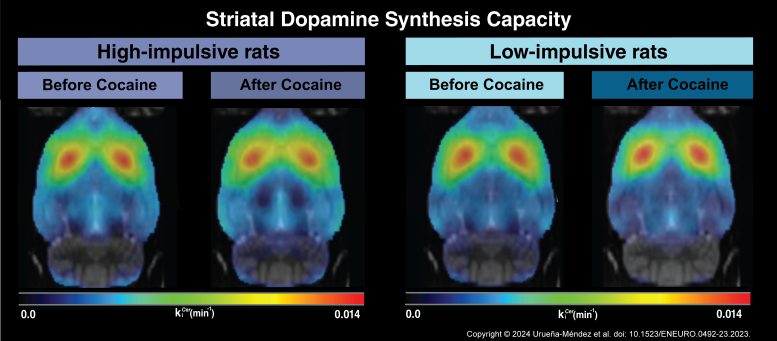The age-old question of why some individuals succumb to substance abuse while others resist has long perplexed scientists. A recent groundbreaking study from the University of Geneva challenges conventional wisdom, offering fresh insights into the complex relationship between impulsivity, dopamine production, and vulnerability to cocaine abuse.
Understanding the Cocaine-Dopamine Connection
Traditionally, it was believed that regular cocaine use impaired the brain’s ability to produce dopamine, contributing to increased drug consumption. However, the University of Geneva’s research, published in eNeuro, turns this notion on its head. The study, conducted on two groups of rats with varying levels of impulsivity, suggests that impulsive action, not risky decision-making, is a more accurate predictor of increased cocaine use.
Debunking the Dopamine Myth
Contrary to previous assumptions, the study reveals that chronic cocaine consumption does not impact the brain’s capacity to produce dopamine. This challenges the established idea that reduced dopamine synthesis is a consequence of regular drug use. The research team, led by Nathalie Ginovart, Associate Professor at the UNIGE Faculty of Medicine, emphasizes that impulsivity and vulnerability to cocaine abuse may be linked to mechanisms controlling dopamine release rather than its production.
Implications for Drug Abuse Research
The groundbreaking findings represent a significant leap in understanding the risk of drug abuse. The research team suggests that individual differences in vulnerability may be associated with variations in the reactivity of dopaminergic neurons. This implies that certain stimuli, including drugs, may be more salient for more impulsive individuals. As scientists continue their research, the study opens doors to exploring alternative mechanisms that explain why some individuals are more prone to drug abuse than others.
Conclusion
In unraveling the mysteries of substance abuse, the University of Geneva’s study challenges the established link between dopamine, impulsivity, and cocaine vulnerability. By demonstrating that chronic cocaine use does not diminish dopamine production capacity, the research shifts the focus to mechanisms controlling dopamine release. This groundbreaking work not only enhances our understanding of drug abuse but also paves the way for more targeted interventions and further exploration into the intricate interplay between brain chemistry and addictive behaviors.
References:
- Urueña-Méndez, G. P., Arrondeau, C., Bellés, L., & Ginovart, N. (2024, January 22). “Decoupling Dopamine Synthesis from Impulsive Action, Risk-Related Decision-Making, and Propensity to Cocaine Intake: A Longitudinal [18F]-FDOPA PET Study in Roman High- and Low-Avoidance Rats.” eNeuro.
